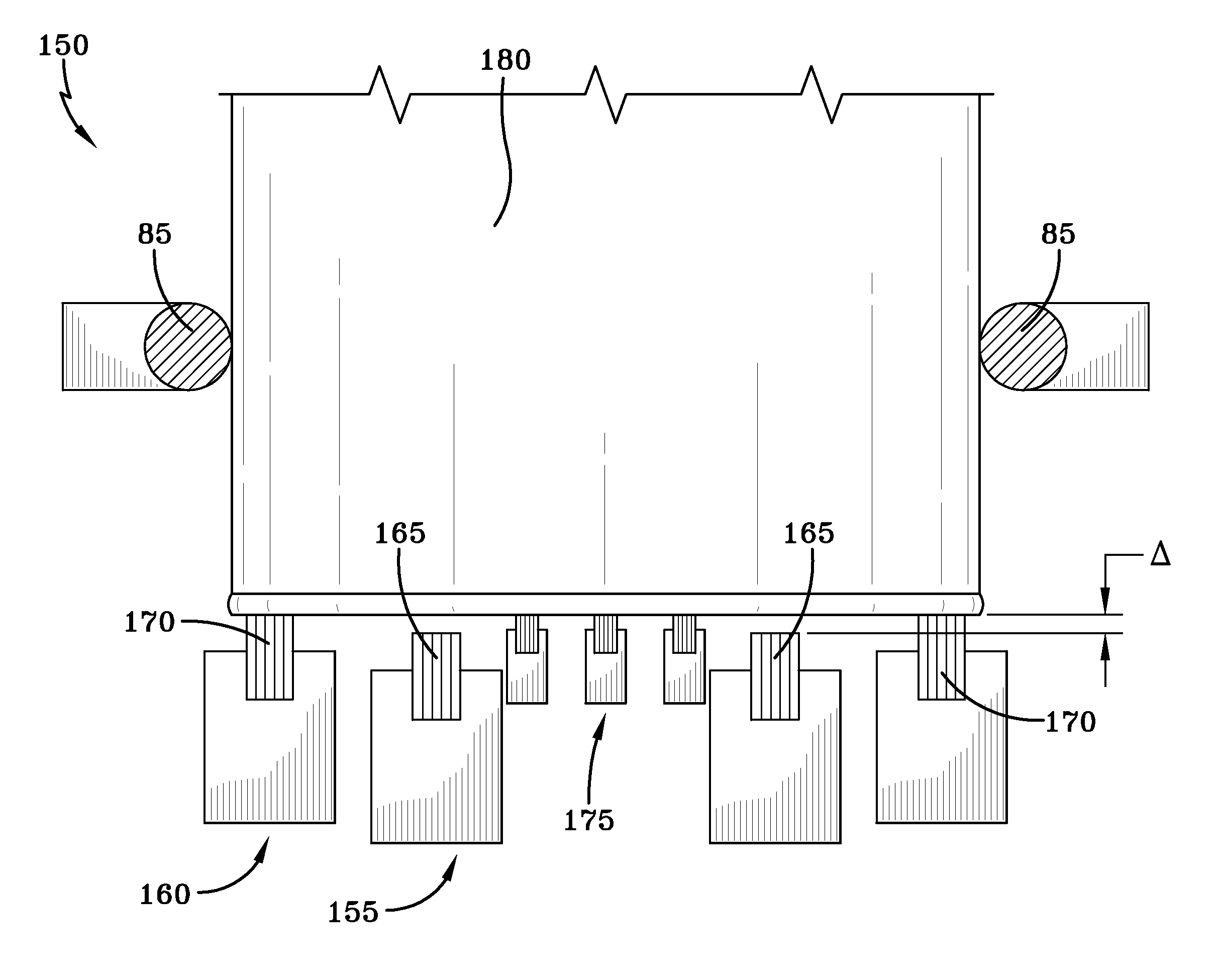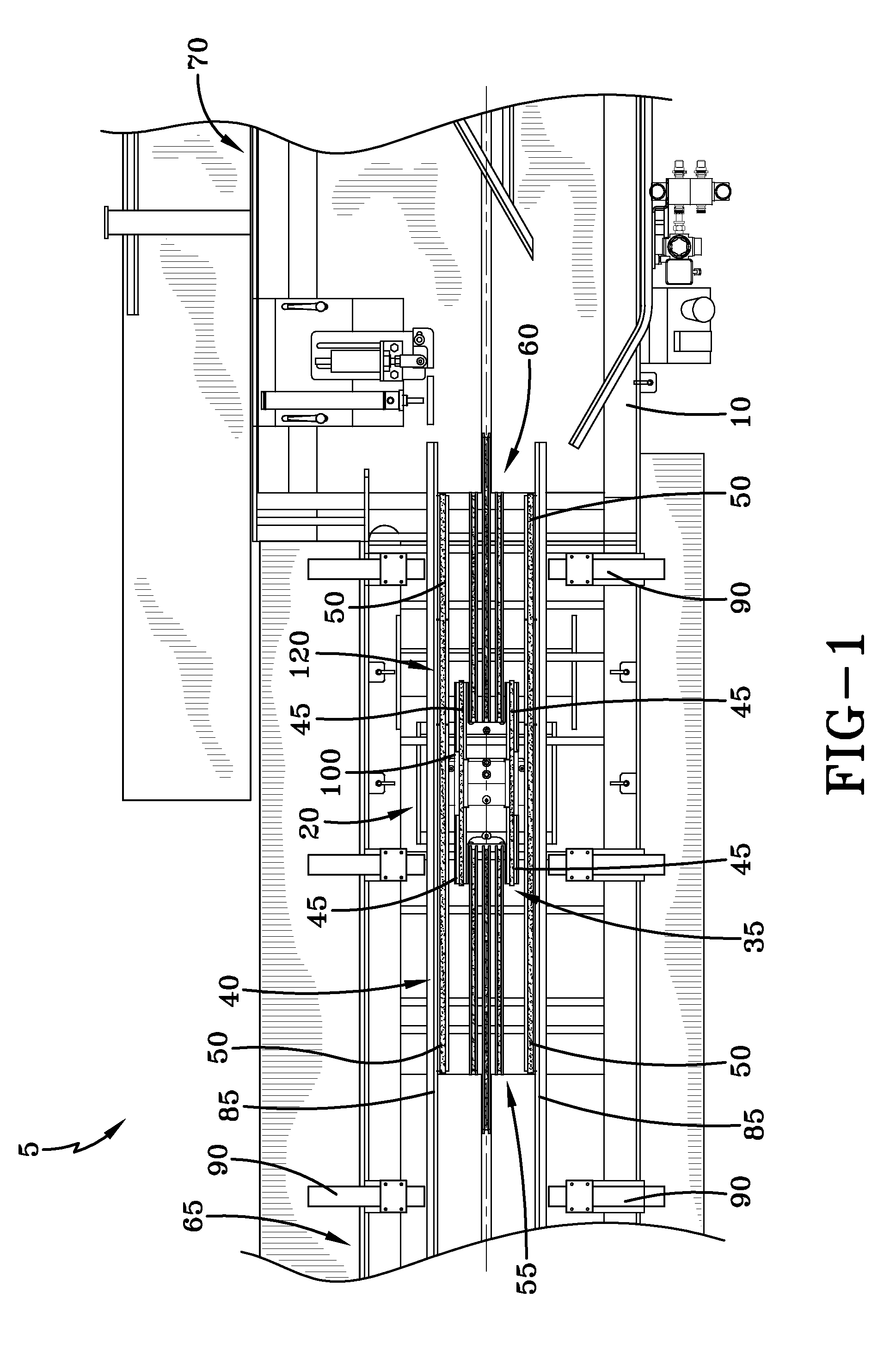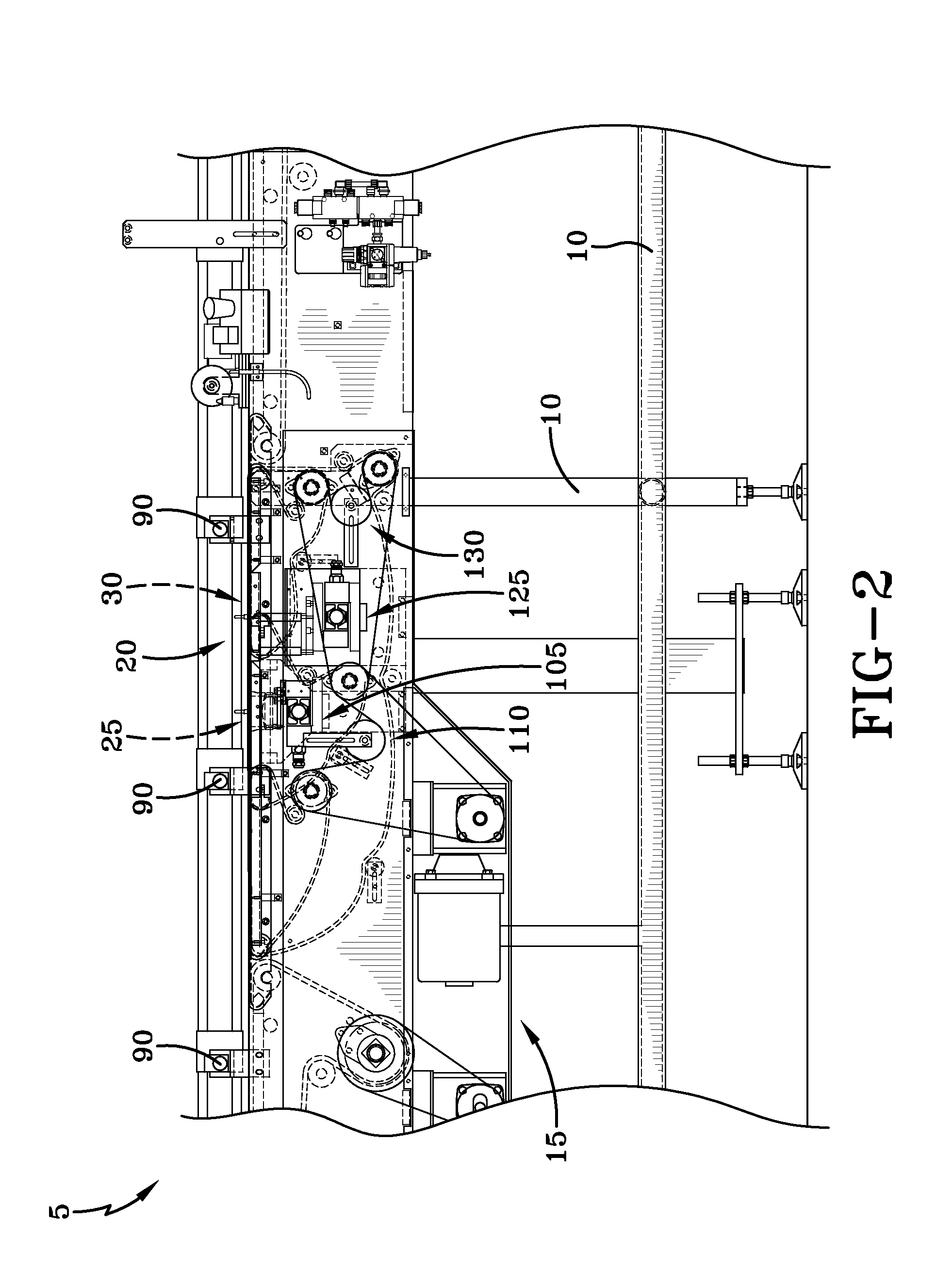Checkweigher with independent scales
a technology of independent scales and checkweighers, applied in the field of checkweighers, can solve the problems of reducing weighing accuracy, reducing the support of heavier weight conveyor chains, and increasing noise, so as to reduce costs, increase noise, and save valuable line space
- Summary
- Abstract
- Description
- Claims
- Application Information
AI Technical Summary
Benefits of technology
Problems solved by technology
Method used
Image
Examples
Embodiment Construction
)
[0021]A portion of one exemplary embodiment of a checkweigher 5 of the present invention is depicted in FIGS. 1-2. As shown, the checkweigher 5 includes a frame 10 and a drive system 15 for passing objects to be weighed through a weighing section 20 of the checkweigher. As would be understood by one of ordinary skill in the art, such a checkweigher may have a variety of frame designs, drive systems, etc. Further, as such items are not critical to the present invention, these items will not be described in detail herein.
[0022]As can be observed in FIGS. 1-3, the checkweigher 5 includes a weighing section 20 having first and second scales 25, 30 for weighing smaller / lighter and larger / heavier objects, respectively. Each scale 25, 30 respectively includes a separate weigh pan 100, 120, a separate weighing conveyor 35, 40, a separate weighing conveyor drive 110, 130, and independent weigh cells 105, 125.
[0023]The first scale 25 utilizes a weigh pan 100 of a length that is preferably su...
PUM
 Login to View More
Login to View More Abstract
Description
Claims
Application Information
 Login to View More
Login to View More - R&D
- Intellectual Property
- Life Sciences
- Materials
- Tech Scout
- Unparalleled Data Quality
- Higher Quality Content
- 60% Fewer Hallucinations
Browse by: Latest US Patents, China's latest patents, Technical Efficacy Thesaurus, Application Domain, Technology Topic, Popular Technical Reports.
© 2025 PatSnap. All rights reserved.Legal|Privacy policy|Modern Slavery Act Transparency Statement|Sitemap|About US| Contact US: help@patsnap.com



